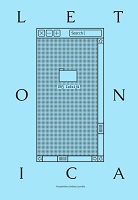Vārdnīcas digitālā struktūra
The Digital Structure of Dictionary
Author(s): Sanda RapaSubject(s): Archiving, Information Architecture, Lexis, Baltic Languages
Published by: Latvijas Universitātes Literatūras, folkloras un mākslas institūts
Keywords: e-lexicography; electronic dictionary; microstructure of e-dictionary; macrostructure of e-dictionary; history of Latvian e-lexicography;
Summary/Abstract: E-lexicography has not got long history in Latvia: the first electronic dictionaries appeared in the late 1990s. However, many achievements can be traced over the past twenty years: electronic dictionaries of Early Latvian (https://tezaurs.lv/lvvv), Standard Latvian (https:// llvv.tezaurs.lv/) and Modern Latvian (https://mlvv.tezaurs.lv/) have been published. Also, databases for crowdsourcing of Latvian place names (www.vietvardi.lv) and regional words (https://apvidvardi.lu.lv) have been created. These resources comprise more than 100 thousand words each of which is accompanied by a linguistic description, examples and data of registration. All of the e-lexicografic sources in Latvian are elaborated in cooperation between the Latvian Language Institute and the Institute of Mathematics and Computer Sciences of the University of Latvia. Based on this experience, the article deals with the history, specificity and importance of the digitization of Latvian language from the point of view of content creators of digital tools. The article is structured into three subchapters. The first part provides an insight into the history of Latvian e-lexicography, the second part analyses the principles of compiling the electronic lexicographic sources in Latvia (including the analysis of microstructure and macrostructure of published electronic dictionaries). The third part deals with the pros and cons of Latvian lexicographic sources as opposed to printed sources (the analysis of corpus integration, data sufficiency and unification, efficiency of access, customization, hybridization, user input is provided). The aim of the article is to outline priorities for the future of Latvian electronic lexicography. The analysis of Latvian electronic dictionaries reveals four areas where Latvian e-lexicography still requires an improvement. Firstly, there is a lack of proformas in all electronic dictionaries of Latvian language which could help to unify the structure of definition and meaning of the entries. Secondly, not all Latvian electronic dictionaries comprise an alphabetical list of lemmas which could help to find an entry without knowing the spelling of the word. Thirdly, audio pronunciation for each entry is necessary in order to provide real (standardized) pronunciation. Fourthly, corpus integration is essential to produce rich lexical entries and to define the meaning of lemmas more precisely
Journal: Letonica
- Issue Year: 2022
- Issue No: 47
- Page Range: 298-310
- Page Count: 13
- Language: Latvian

